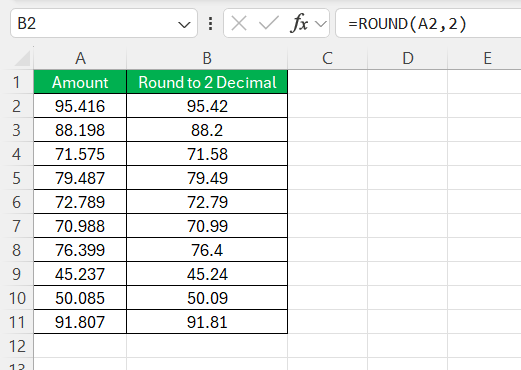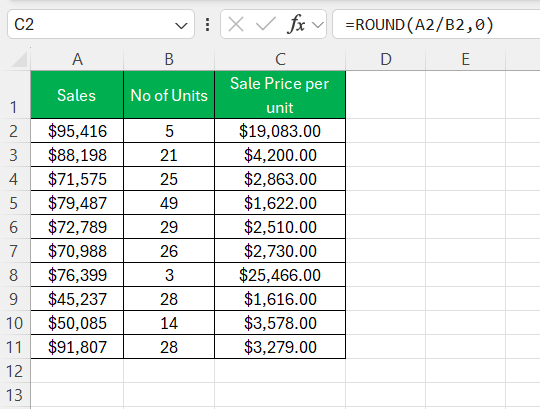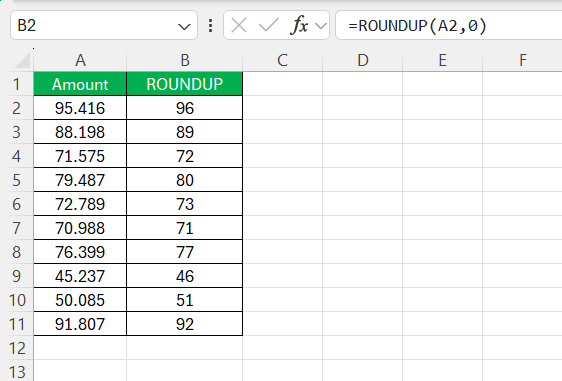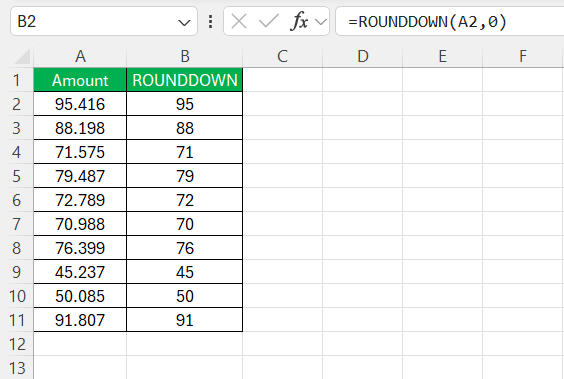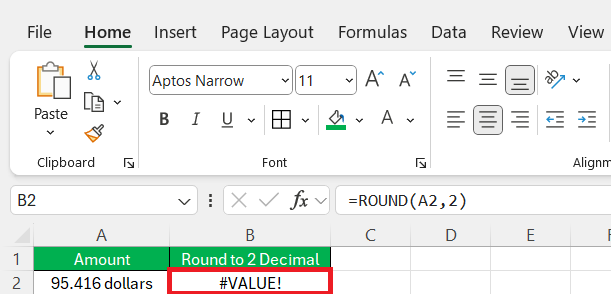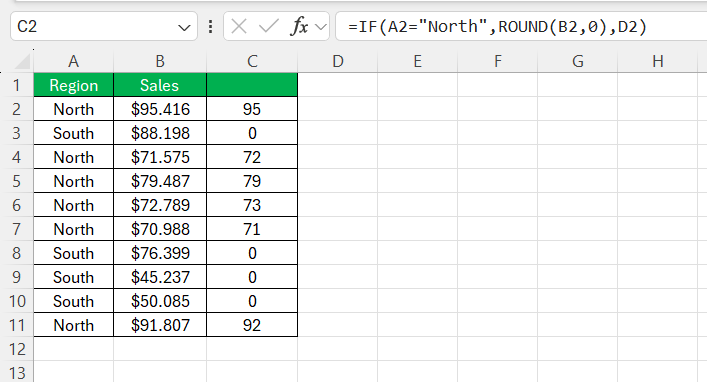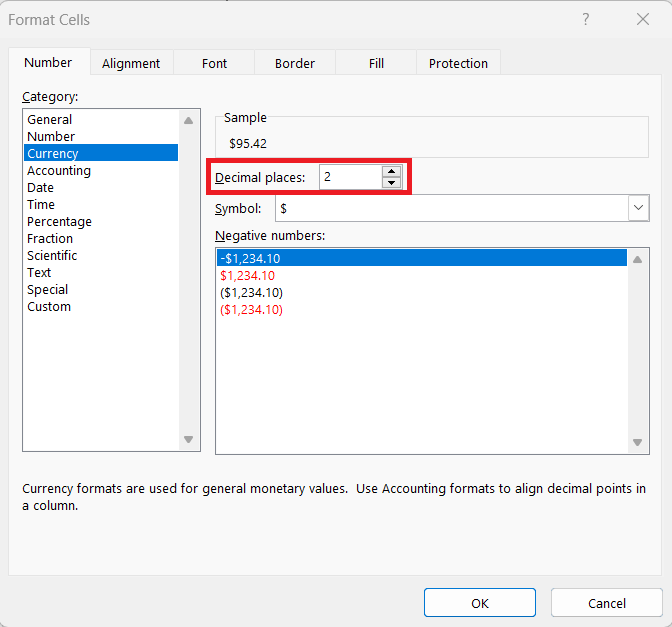When working with numbers in Excel, precision is often key, but there are times when rounding can simplify data presentation or calculations. The ROUND function in Excel is a powerful tool that helps you manage numerical values by rounding them to a specified number of digits. Whether you’re dealing with financial data, grades, or any other set of numbers, knowing how to use the ROUND function can make your work more efficient and your results clearer. In this article, I’ll guide you through the essentials of using the ROUND function effectively.
Key Takeaways:
- Precision and Clarity: The ROUND function helps simplify and clarify data by reducing unnecessary decimals.
- Syntax Simplicity: The ROUND function is easy to use with its straightforward syntax:
ROUND(number, num_digits). - Practical Applications: ROUND is essential for financial data, grades, or any scenario where clean numbers are needed.
- Rounding Variants: Excel offers ROUND, ROUNDUP, and ROUNDDOWN functions for different rounding needs.
- Advanced Techniques: You can nest other functions inside ROUND and use it with data validation for more complex calculations.
Table of Contents
Introduction to Precision in Excel
The Art of Accurate Calculations
In the digital realm, where a single decimal can either balloon or deflate an entire analytical model, mastering precise calculations is more than a nifty trick—it’s a quintessential skill. In my experience delving into spreadsheets, I’ve seen how an extra decimal point can skew results and, conversely, how a well-rounded number can crystallize data reports, making them more digestible and meaningful.
Precision, therefore, isn’t just about accuracy; it’s about clarity and reliability of data interpretation.
Your Entry into Excel’s ROUND Function
Diving into Excel, there’s a powerful tool at our disposal for achieving this much-sought precision—the ROUND function. I often recommend it for those who need their numbers neat and tidy, stripped of unnecessary decimal clutter.
This function is a straightforward, yet profoundly impactful way to ensure your data is neatly packaged into the preferred number of digits. Whether it’s financial analysts crunching budget forecasts or scientists interpreting experimental data, ROUND is an indispensable ally in the quest for crisp, clean numbers.
Delving Deep Into the ROUND Function
Understanding How ROUND Works
Getting to grips with the ROUND function is akin to learning a secret handshake in the world of number crunching. Here’s the gist: ROUND takes a number and trims it to the desired length, so to speak. Consider it the numerical equivalent of a gardener pruning a bush to a specified shape. By pinpointing exactly how many decimal places you want to keep, you retain the essential figure while discarding excess digits that might muddy your data.
Imagine you’re working with the weight of chemical substances in a lab. Too many decimal places, and your findings could seem overprecise, and impractical for replication. Fewer decimals, however, might compromise the rigor of your research. The ROUND function steps in as the voice of reason, trimming data to the sweet spot of utility and exactitude.
Syntax and Parameters of ROUND
When we talk about syntax in Excel, we’re essentially discussing the blueprint for constructing a function. In the case of ROUND, this blueprint is disarmingly simple yet powerful. The syntax calls for two pivotal parameters: the number you’re working with and the number of digits you want to round it to.
The anatomy of the ROUND function reads as ROUND(number, num_digits).
- The ‘number’ is just what you’d expect: the value you’re aiming to round. It might be a hard-coded number, a cell reference, or even a result of a complex formula.
- The ‘num_digits’ parameter is where you can dictate the level of precision.
If you want to round to the nearest whole number, you set num_digits to 0. To go two decimal places deep, you input 2 for num_digits, and for an entire tens or hundreds simplification, you’ll input a negative number.
Always keep in mind, that the num_digits doesn’t just cut off the number; it rounds it mathematically, following established rules of rounding up or down depending on the digit following your cutoff point.
Practical Applications of ROUND
Round to the Nearest Whole Number or Decimal Place
Rounding to the nearest whole number or decimal place in Excel feels like a quintessential bit of formula magic that polishes raw data into comprehensible figures. To round a number to its nearest whole value, use the ROUND function with the num_digits parameter set to zero.
It’s that simple. This trims off the decimals and gives a number that can be more readily grasped and applied, particularly handy when dealing with large data sets where decimal points can become noise.
If my focus is on refinement, say, ensuring financial statements show values to two decimal places representing cents, I’d adjust that function to =ROUND(amount, 2).
The outcome retains essential cent values, crucial for accurate financial reporting and analysis.
Rounding Techniques Beyond the Basics
Nesting Functions Inside ROUND for Complex Calculations
When we delve into more intricate Excel calculations, nesting functions within the ROUND function truly showcase its robust flexibility. I find it incredibly powerful to include other operations inside ROUND—for instance, to round the result of a division, as in =ROUND(A2/B2, 0).
Here, the division operation is nested within the ROUND function, allowing for the final result to snap snugly to the nearest whole number.
By thinking of ROUND as the outer shell, we can insert virtually any formula that yields a numeric outcome within its embrace. This nesting capability isn’t just about condensing formulas; it optimizes data for clear interpretation, ensuring results emerge precisely as needed and ready for analysis or presentation.
The Differences Between ROUND, ROUNDDOWN, and ROUNDUP
When we compare ROUND with its siblings, ROUNDDOWN, and ROUNDUP, it’s like comparing different flavors of ice cream; they’re similar but cater to varying palates. The ROUND function adheres to the standard rounding rules, rounding numbers 1 through 4 down and 5 through 9 up. It’s the balanced choice for general use where traditional rounding is applied.
On the other hand, I turn to ROUNDUP when the goalpost is to consistently round numbers up; a perfect scenario is to estimate a budget where you’d rather err on the side of caution.
Meanwhile, ROUNDDOWN acts as the conservative counterpart, forever rounding numbers down, which can be pivotal in avoiding price or inventory inflation.
In essence, ROUND is your all-rounder, ROUNDUP is your optimistic estimator, and ROUNDDOWN is your cautious calculator. Each has its stage where it performs best, and knowing when to cast each function is key to mastering Excel’s rounding ensemble.
Tips for Excel Rounding Mastery
Common Pitfalls When Using the ROUND Function
Even though the ROUND function is generally straightforward, like any aspect of Excel, there are classic pitfalls to watch out for. A typical misstep is encountering the #VALUE! error, which crops up when the argument fed to ROUND isn’t numeric.
This happens if, say, you inadvertently try to round a piece of text, leading Excel to throw its hands up with an error message. It’s also quite common to confuse the number of decimal places with the number of significant figures you want to round to, potentially throwing your results askew.
Plus, remember that Excel will round halfway points, such as 2.5, to the nearest even number as part of its built-in ’rounding ties to even’ rule (also known as Banker’s rounding), which might not always meet your expectations.
By staying vigilant to these quirks and ensuring your input values are in number format, you can navigate the ROUND function with fewer stumbles and achieve the precision you need.
Advanced Tips for Efficient Rounding Strategies
Building on the foundational knowledge of the ROUND function, there are advanced tactics that can make our rounding strategies more efficient. For instance, using the IF function in tandem with ROUND can conditionally format numbers based on specific criteria, providing a dynamic response to data analysis.
Another savvy move is to utilize the ROUND function within data validation rules. This can enforce consistent decimal places across user inputs in a workbook — invaluable for maintaining a clean dataset.
For those of us who juggle large datasets, incorporating rounding within array formulas is a game-changer. This enables simultaneous rounding of ranges or entire columns of data with a single stroke, optimizing both time and accuracy in handling extensive records.
Lastly, it’s essential to leverage the power of formatting cells. By setting the cell format to display a fixed number of decimal places, the visual presentation of data will align with rounded calculations, preventing confusion from raw numbers lurking behind the scenes.
By integrating these advanced techniques into our Excel toolkit, we elevate our proficiency in manipulation of rounded numbers, leading to smoother data handling and analysis practices.
FAQs on Excel’s ROUND Function
How do you use the ROUND function in Excel?
To use the ROUND function in Excel, first, select the cell where you want the rounded number to appear. Then type =ROUND followed by an opening parenthesis. Next, enter the number you want to round or the cell containing the number, add a comma, and type the number of digits you want to round to. Close the parenthesis and press Enter. The rounded number will appear in the selected cell. For example, =ROUND(A1, 2) would round the number in cell A1 to two decimal places.
How do I round to 2 decimal places in Excel?
To round to two decimal places in Excel, use the ROUND function with the second argument set to 2. Your formula would look like =ROUND(cell_reference, 2), where ‘cell_reference’ is the cell holding the number you wish to round. This will adjust your figure to two decimal places, ideal for financial calculations involving dollars and cents.
How Can I Quickly Access the ROUND Function in Excel?
To quickly access the ROUND function in Excel, you can use the Formula tab on the ribbon. Click on ‘Formulas’, then navigate to the ‘Math & Trig’ dropdown. Select ‘ROUND’ from the list. Alternatively, begin typing “=ROUND” directly into the desired cell, and Excel will typically offer the function as a suggestion, which you can confirm with a double-click.
Can You Round Numbers Differently Depending on Their Size?
Yes, you can round numbers differently based on their size in Excel by combining the ROUND function with logical functions like IF. This allows you to apply different rounding rules for numbers that meet specific conditions. For example, you could use a formula that rounds numbers greater than 1000 to the nearest ten, while rounding smaller numbers to the nearest whole number.
Is There a Way to Round Up or Down Without Affecting the Original Number Significantly?
Yes, Excel’s ROUNDUP and ROUNDDOWN functions let you round numbers without significantly affecting the original number. These functions allow you to specify the number of decimal places to round to, giving you control over the level of precision. ROUNDUP always rounds away from zero, while ROUNDDOWN always rounds towards zero, regardless of the following digit. For minimal impact, you might round to the nearest whole number or to a few decimal places, ensuring the original number’s essence is maintained while achieving the desired precision.
John Michaloudis is a former accountant and finance analyst at General Electric, a Microsoft MVP since 2020, an Amazon #1 bestselling author of 4 Microsoft Excel books and teacher of Microsoft Excel & Office over at his flagship MyExcelOnline Academy Online Course.

